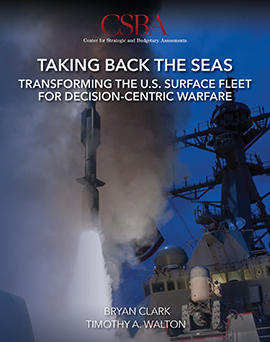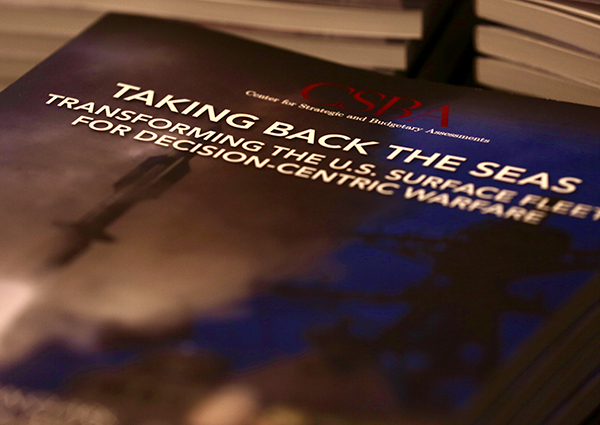
The U.S. Navy’s surface fleet is at a crossroads. Today’s force lacks the size, resilience, and offensive capacity to contribute effectively to degrading, delaying, or denying aggression. These shortfalls are especially problematic in light of the fact that the surface fleet will play an increasingly important role in the U.S. Navy’s ability to counter enemy attacks. The current fleet is also fiscally unsustainable due to growing operations and support costs for today’s highly integrated and manpower-intensive surface combatants. New technologies for unmanned systems, sensors, weapons, C3, and countermeasures could allow significant improvements in the surface fleet’s ability to create complexity for an adversary and harden surface forces from attack while improving surface force’s capacity for maritime or land strike.
CSBA’s proposed architecture of operational concepts, force packages, posture, readiness cycles, and platforms would improve the surface fleet’s ability to support U.S. defense strategy as well as make it more sustainable. With U.S. carrier aviation constrained in range and capacity and challenged by rising sustainment costs, and with the submarine force shrinking, the surface fleet will have increased importance in deterrence, reassurance, and warfare. U.S. Navy leaders should make the hard choices needed to ensure the surface force can meet that challenge.

































